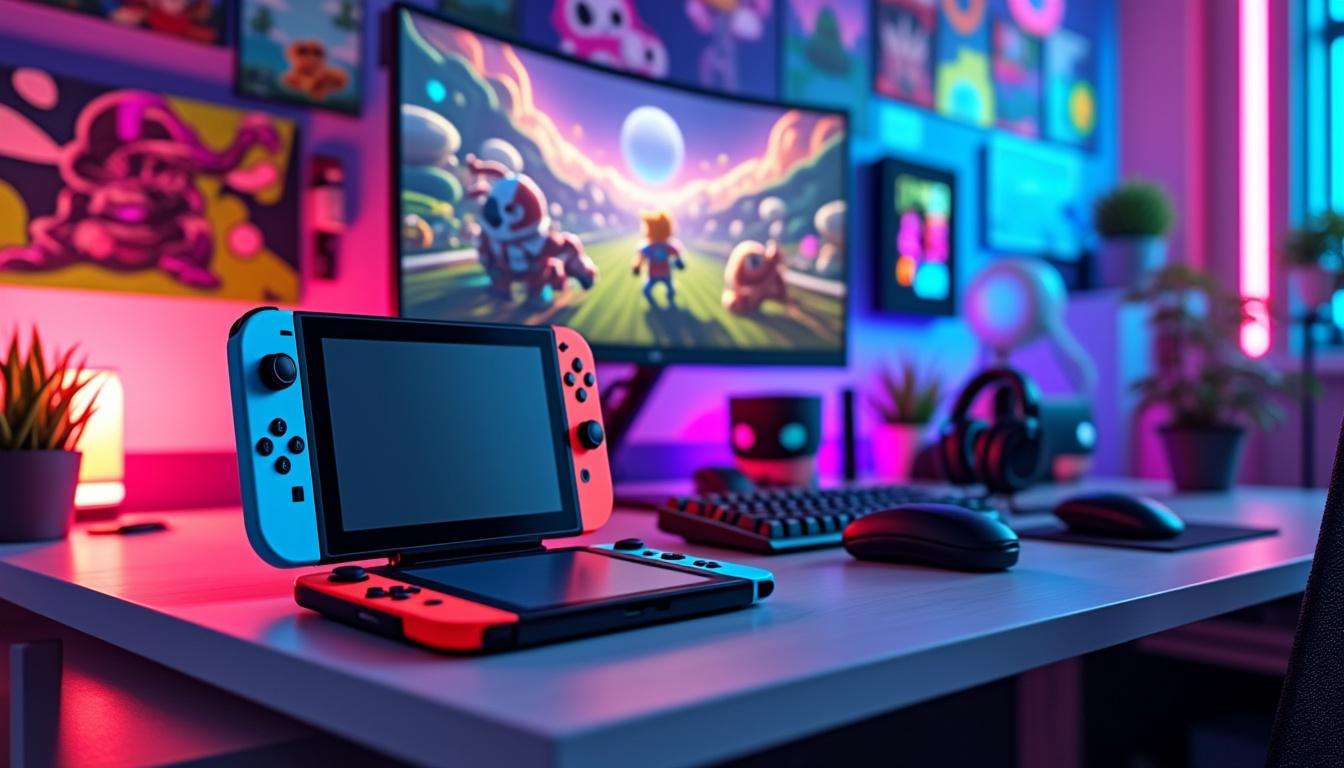Since its release, the Nintendo Switch 2 has captivated many gamers eager to dive into new titles and enjoy Nintendo’s vibrant ecosystem. However, beneath the excitement lies a stark reality that’s difficult to ignore in 2025’s competitive handheld gaming market. While the Switch 2 offers familiar family-friendly gaming experiences like Mario Kart World and Super Smash Bros Ultimate, its hardware — particularly the display — hasn’t kept pace with what gamers expect from modern gaming hardware. Compared to typical gaming monitors and even the latest handheld gaming PCs, the Switch 2’s screen technology feels outdated and lacking. This discrepancy raises important questions about value for money and whether gamers should begin considering alternatives, especially handheld gaming PCs from brands like ASUS ROG, Lenovo Legion, and Razer, that deliver significantly better performance and visuals. In this evolving landscape, the Switch 2’s limitations extend beyond just the display, challenging Nintendo fans to reassess their handheld gaming choices.
Switch 2 Display Performance VS Gaming Monitors: Why Nintendo Falls Behind
The heart of the Switch 2’s hardware issues lies in its LCD panel, which has stirred considerable criticism. According to detailed testing by Monitors Unboxed, the display registers an average response time of 33ms at 60Hz. For gamers accustomed to smooth, crisp graphics on gaming monitors and premium handhelds, this translates into noticeable ghosting and motion smearing, especially in fast-paced titles. Popular gaming monitors often boast response times below 10ms, with high refresh rates surpassing 120Hz, providing fluid and immersive experiences that the Switch 2 simply cannot match.
Additionally, the Switch 2 fails to deliver proper HDR performance, with brightness levels not exceeding 400 nits. This is below the minimum for even entry-level HDR, causing games to appear less vibrant and dynamic compared to what you’d find on gaming monitors or handheld PCs, such as the ASUS ROG Ally or Lenovo Legion Go. For gamers exploring the vast gaming worlds available on Nintendo Switch titles and beyond, this screen drawback undercuts immersion.
- Low refresh rate and high response time lead to visual artifacts
- Subpar HDR implementation affects color accuracy and brightness
- Compared to handheld gaming PCs, the Switch 2 display offers little to appeal for demanding players
These display shortcomings are symptomatic of Nintendo’s design philosophy focused on accessibility rather than cutting-edge tech. Yet, in 2025, many gamers expect better hardware, especially when the Switch 2 pricing hovers around that of mid-tier handheld gaming PCs.
Why Handheld Gaming PCs Like ASUS ROG Ally and Lenovo Legion Outshine the Switch 2
Beyond just the display, handheld gaming PCs have emerged as formidable competitors to Nintendo’s latest handheld efforts. Devices such as the ASUS ROG Ally offer a 7ms response time and 120Hz refresh rate, making image clarity and quick reactions more achievable. The Legion Go takes this further with detachable controllers and comparable AMD Ryzen Z1 Extreme processors, delivering a mainstream PC gaming experience on the go that the Switch 2 can’t replicate.
The notable advantages of handheld gaming PCs include:
- Expanded game libraries: Access to Steam, Xbox Game Pass, and PC launchers provide thousands of titles
- Superior hardware: Better CPUs, GPUs, and screens optimized for gaming
- Flexibility: Open platforms that support mods, cloud saves, and enhanced connectivity
- Freedom: No risk of Nintendo-style online restrictions or game disabling
While these devices start around $650, discounts and sales make them attainable — quite competitive given the Switch 2’s high game prices often exceeding $80 per title. Plus, the ability to emulate or even legally transfer games (where permitted) adds further value for players wanting diverse gaming ecosystems.
Considering the Cost: Does Switch 2 Offer Enough Value in 2025’s Competitive Market?
The value proposition of the Nintendo Switch 2 is complicated. Nintendo’s family-friendly games are undeniably appealing, with a range of exclusive franchises maintaining the brand’s unique charm. Yet the platform’s hardware limitations put it at a disadvantage against handheld PCs from ASUS, Lenovo, and others, which prioritize power, screen quality, and versatility.
Key issues to weigh include:
- Expensive game prices: $80 per title is a steep price compared to PC stores and subscription services
- Outdated display tech: Limits enjoyment, especially for visually demanding genres
- Restricted ecosystem: Online policies limit mod support and game ownership, as noted in discussions about Nintendo’s crackdown on piracy
- Limited hardware upgrades: Nintendo’s consoles tend to maintain similar specs over generations
Comparatively, handheld gaming PCs offer expanding ecosystems and hardware upgrades that align well with gamers accustomed to platforms like PlayStation, Xbox, and PC gaming on devices such as the Steam Deck. If you demand top-tier performance and display quality, pursuing a handheld gaming PC may ultimately serve gamers better in 2025.
How Nintendo’s Market Position Faces Challenges From Rising Handheld Gaming PCs
Despite Nintendo’s stronghold on exclusive titles and loyal fanbase, the rise of high-performance handheld gaming PCs is reshaping the portable gaming landscape. Brands like Razer and ASUS ROG not only match but often exceed capabilities found in the Switch 2, compelling gamers to reconsider their options.
- Innovative PC handhelds integrate cloud gaming options, increasing accessibility
- Windows-based devices provide broader game compatibility and software updates
- Competitive sales and price adjustments during events like Amazon Gaming Week create attractive purchase opportunities
- New launches and rumors around upcoming Xbox handhelds and ASUS & Razer projects keep momentum high
Gaming enthusiasts who value performance and display fidelity, backed by market analysis from sources like Tom’s Guide Gaming 2025, increasingly view handheld gaming PCs as the future of portable gaming, even as Nintendo continues to foster a different kind of gaming experience.
